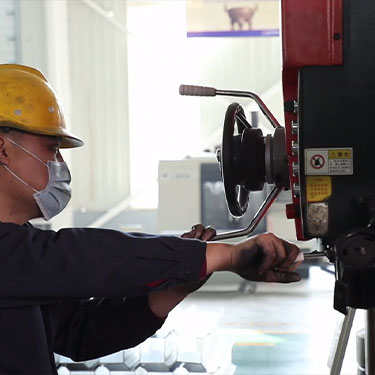
Nov . 10, 2024 15:54
Back to list
Heat Exchanger for Natural Gas Efficiency and Performance Optimization
Heat Exchangers for Natural Gas An Overview
Heat exchangers play an essential role in various industries, facilitating the efficient transfer of heat between two or more fluids. In the context of natural gas processing, the effectiveness of heat exchangers is crucial for the optimization of operations, safety, and energy efficiency. This article will explore the types, functioning principles, advantages, and challenges associated with heat exchangers used in natural gas applications.
Types of Heat Exchangers
Heat exchangers can be classified into several types based on their construction and operating principles. The most commonly used types in the natural gas industry include
1. Shell and Tube Heat Exchangers Consisting of a series of tubes, these heat exchangers are particularly effective for large-scale applications. The design allows one fluid to flow through the tubes while another fluid flows outside the tubes in a shell. Their robust construction makes them suitable for high-pressure and high-temperature processes.
2. Plate Heat Exchangers These comprise multiple thin plates stacked together, creating channels for fluid flow. Plate heat exchangers are compact and efficient, offering a higher surface area for heat transfer compared to shell and tube designs. Their smaller footprint makes them ideal for applications where space is limited.
3. Air-Cooled Heat Exchangers These are used when cooling is required and water resources are scarce. Air-cooled heat exchangers pass air over finned tubes to remove heat from the fluid. They are commonly employed in natural gas compressor stations and processing plants.
Operating Principles
Heat exchangers function based on the principle of heat transfer, where thermal energy is exchanged between two or more fluid streams at different temperatures. The efficiency of a heat exchanger is often measured using the heat exchange effectiveness, which indicates how well it transfers heat. This process takes place through convection and conduction, with the primary goal being to maximize heat transfer while minimizing energy consumption.
The flow arrangement can significantly impact the performance of a heat exchanger. Common configurations include counterflow, parallel flow, and crossflow. In counterflow heat exchangers, the two fluids flow in opposing directions, generally resulting in higher thermal efficiency compared to parallel flow arrangements where both fluids move in the same direction.
.
Heat exchangers provide numerous advantages in natural gas applications
المبادل الحراري للغاز الطبيعي

1. Energy Efficiency By recovering heat from exhaust gases or waste streams, heat exchangers can significantly reduce energy consumption in processing plants.
2. Cost Savings Efficient heat exchange processes lower the overall operational costs, which is crucial in the competitive natural gas market.
3. Process Optimization Heat exchangers enable better temperature control and fluid processing, enhancing the overall efficiency of natural gas operations.
4. Environmentally Friendly By improving energy efficiency, heat exchangers contribute to reducing greenhouse gas emissions associated with natural gas operations.
Challenges and Considerations
While heat exchangers offer numerous benefits, some challenges must be addressed
1. Fouling Over time, the build-up of deposits on heat exchanger surfaces can reduce heat transfer efficiency. Regular cleaning and maintenance are crucial to mitigate fouling issues.
2. Design Complexity The design of heat exchangers needs to be carefully optimized for specific applications, considering factors such as fluid properties, temperature differences, and pressure drops.
3. Material Selection Given the corrosive properties of natural gas and associated fluids, selecting suitable materials that can withstand operating conditions is vital for longevity and performance.
4. Initial Investment The upfront costs of acquiring and installing heat exchangers can be significant, although they may lead to long-term savings.
Conclusion
Heat exchangers are a fundamental component in the natural gas industry, contributing to energy efficiency, cost savings, and environmental sustainability. By enhancing the recovery and transfer of heat, they play a critical role in optimizing processing operations. Despite the challenges they present, the advantages of utilizing heat exchangers make them indispensable in the modern natural gas landscape. As technology advances, innovations in heat exchanger design and materials could further enhance their efficiency and applicability in the industry.
Latest news
-
Safety Valve Spring-Loaded Design Overpressure ProtectionNewsJul.25,2025
-
Precision Voltage Regulator AC5 Accuracy Grade PerformanceNewsJul.25,2025
-
Natural Gas Pressure Regulating Skid Industrial Pipeline ApplicationsNewsJul.25,2025
-
Natural Gas Filter Stainless Steel Mesh Element DesignNewsJul.25,2025
-
Gas Pressure Regulator Valve Direct-Acting Spring-Loaded DesignNewsJul.25,2025
-
Decompression Equipment Multi-Stage Heat Exchange System DesignNewsJul.25,2025

